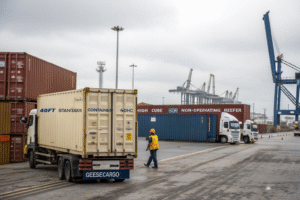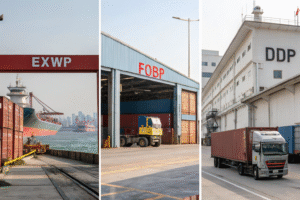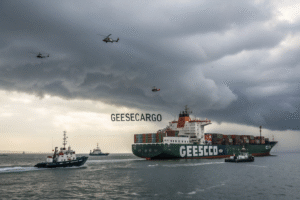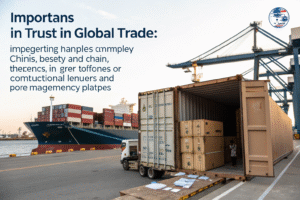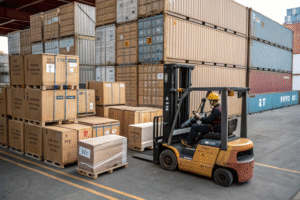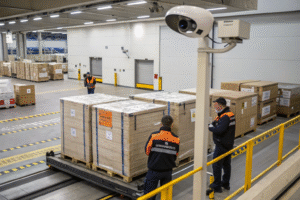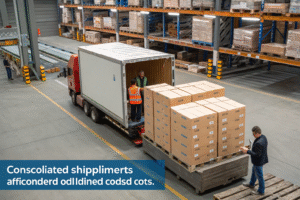Trying to guess how much freight from China will cost can feel like solving a puzzle with missing pieces. Rates fluctuate. Surcharges appear. And quotes from different providers vary wildly.
To calculate freight rates from China, you need to consider cargo volume, shipping mode, route, seasonal demand, and additional fees. A full quote includes base rates, surcharges, and destination charges.
Knowing how freight pricing works puts you in control. It helps you plan better, negotiate smarter, and protect your profit margins. Let me walk you through how we calculate accurate shipping costs at GeeseCargo.
Factors that determine international freight rates
Every shipment is unique — so are its costs. Two companies can ship similar goods but receive very different quotes. Why? Because freight pricing depends on more than just distance.
The main factors affecting freight rates are cargo size, weight, mode of transport, origin-destination pair, season, and fuel surcharges.

What key elements drive your shipping costs?
Let’s break down the most important pricing drivers:
| Factor | Description |
|---|---|
| Cargo Dimensions | Freight is billed by weight or volume, whichever is higher |
| Shipping Mode | Air is faster and more expensive; ocean is cheaper but slower |
| Container Type | Standard, high cube, reefer, or open-top impact base rate |
| Route & Port Pair | Longer distances and less common ports cost more |
| Seasonality | Rates rise sharply in Q3/Q4 during peak season |
| Fuel & BAF | Bunker Adjustment Factors fluctuate monthly |
| Incoterms | Affects who pays origin and destination charges |
| Urgency | Priority handling adds fees |
For example, shipping 2 CBM of belts from Guangzhou to New York in April may cost $280 via LCL. But the same cargo in November could be $450 due to peak demand.
At GeeseCargo, we factor in both seasonal index data and daily carrier updates to give our clients real-time quotes.
Does weight or volume matter more?
Whichever is greater. This is called chargeable weight:
- For sea freight: Charge based on CBM (cubic meters)
- For air freight: Charge based on volumetric weight (length × width × height ÷ 6,000)
Understanding this formula helps avoid surprises. Always package efficiently to reduce chargeable space.
How to estimate FCL and LCL shipping costs
Most importers start with a basic question: “How much will it cost to ship my goods?” The answer depends on whether you’re booking a full container or just a small batch.
FCL (Full Container Load) shipping is priced per container, while LCL (Less than Container Load) is priced per CBM. Knowing the difference is key to accurate cost estimation.

How are FCL rates calculated?
FCL pricing is typically quoted as:
- Port-to-port freight cost (e.g., Shanghai to Los Angeles: $3,600 for 40HQ)
- Plus origin charges (pickup, export customs, container stuffing)
- Plus destination charges (unloading, port handling, inland trucking)
Sample FCL cost estimate:
| Charge Type | USD |
|---|---|
| Ocean Freight (40HQ) | $3,600 |
| Origin Handling | $400 |
| Import Customs + Port Fees | $750 |
| U.S. Delivery (Trucking) | $700 |
| Total | $5,450 |
At GeeseCargo, we offer full door-to-door FCL quotes including DDP options.
How is LCL priced differently?
LCL is calculated by volume, typically $/CBM, with a minimum chargeable volume (usually 1 CBM). Key components:
- LCL Freight Rate: e.g., $45/CBM
- CFS Fee (origin warehouse)
- DTHC (destination terminal handling)
- Delivery charges per pallet or address
Sample 3 CBM shipment cost:
| Charge Type | USD |
|---|---|
| LCL Freight (3 CBM × $45) | $135 |
| Origin CFS + Docs | $120 |
| DTHC + Customs | $180 |
| Final Delivery | $190 |
| Total | $625 (all-in) |
LCL is good for small-volume, low-margin goods. But it can be slower due to consolidation schedules.
Tools and calculators for freight rate quotes
Don’t want to guess? You don’t have to. Today’s tools and platforms can help you get quick, data-based freight quotes — even if you’re new to logistics.
Freight quote tools use cargo details, shipping routes, and market indexes to give real-time shipping cost estimates. These tools can be used for both FCL and LCL planning.
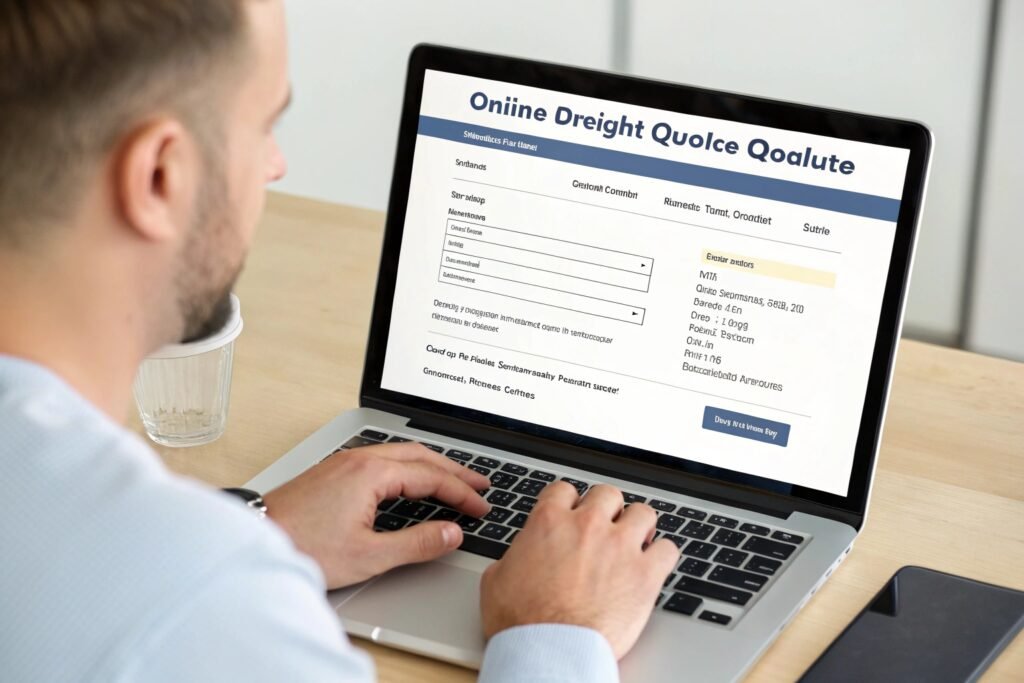
What are the best freight quote calculators?
Here are some widely used platforms:
| Tool | Features |
|---|---|
| GeeseCargo Instant Quote | Fast FCL/LCL quotes for China–U.S./EU routes |
| Freightos.com | Compare rates across forwarders |
| iContainers | Online booking + transit time predictions |
| Flexport Rate Calculator | Includes customs estimate |
| Maersk Spot Quote | Direct carrier pricing (FCL only) |
Our team at GeeseCargo also offers custom calculators via Excel or Google Sheets for clients with regular shipping patterns. These allow you to estimate per-unit landed cost quickly.
What info do you need to get a quote?
Prepare these inputs:
- Cargo size (CBM) or weight
- Product type (to determine HS code)
- Origin port in China
- Destination (port or warehouse)
- Incoterm (e.g., FOB, DDP)
- Delivery urgency or deadlines
The more complete your info, the more accurate your quote. Vague requests like “how much to ship a box of clothes?” often get vague answers.
Hidden fees to watch for in freight pricing
Even a low quote can turn expensive if you're hit with unexpected charges later. Many forwarders don’t disclose everything upfront — and that’s where trouble begins.
Hidden fees in freight quotes include documentation charges, port surcharges, customs inspection fees, storage charges, and last-mile delivery costs. Always ask for an all-inclusive quote.

What are common hidden or surprise charges?
| Hidden Fee | When It Applies |
|---|---|
| ISPS (Security) | Mandatory for sea shipments |
| AMS Filing | Required for shipments to the U.S. |
| Port Congestion Surcharge | Charged during peak congestion |
| Demurrage | If cargo isn’t picked up quickly from port |
| Detention | Delay in returning empty container |
| Customs Exam Fees | If cargo is selected for inspection |
| Documentation Fee | For export declarations or arrival notices |
At GeeseCargo, we provide a full breakdown of what’s included and what’s not in every quote. Our clients never have to guess.
How can you avoid surprise charges?
- Ask for a quote marked “all-in” door-to-door
- Confirm demurrage-free days for containers
- Use DDP shipping if you don’t want to deal with customs at all
- Request past invoice samples from the forwarder
- Check if fuel or currency surcharges are included
Smart buyers like Ron ask for quotes that mirror the final invoice. That’s how you avoid confusion, lost time, and inflated landed costs.
Conclusion
Freight rates from China aren’t mysterious — once you understand what goes into the price. With the right info, tools, and partner like GeeseCargo, you can calculate your true shipping cost and keep your supply chain predictable.

